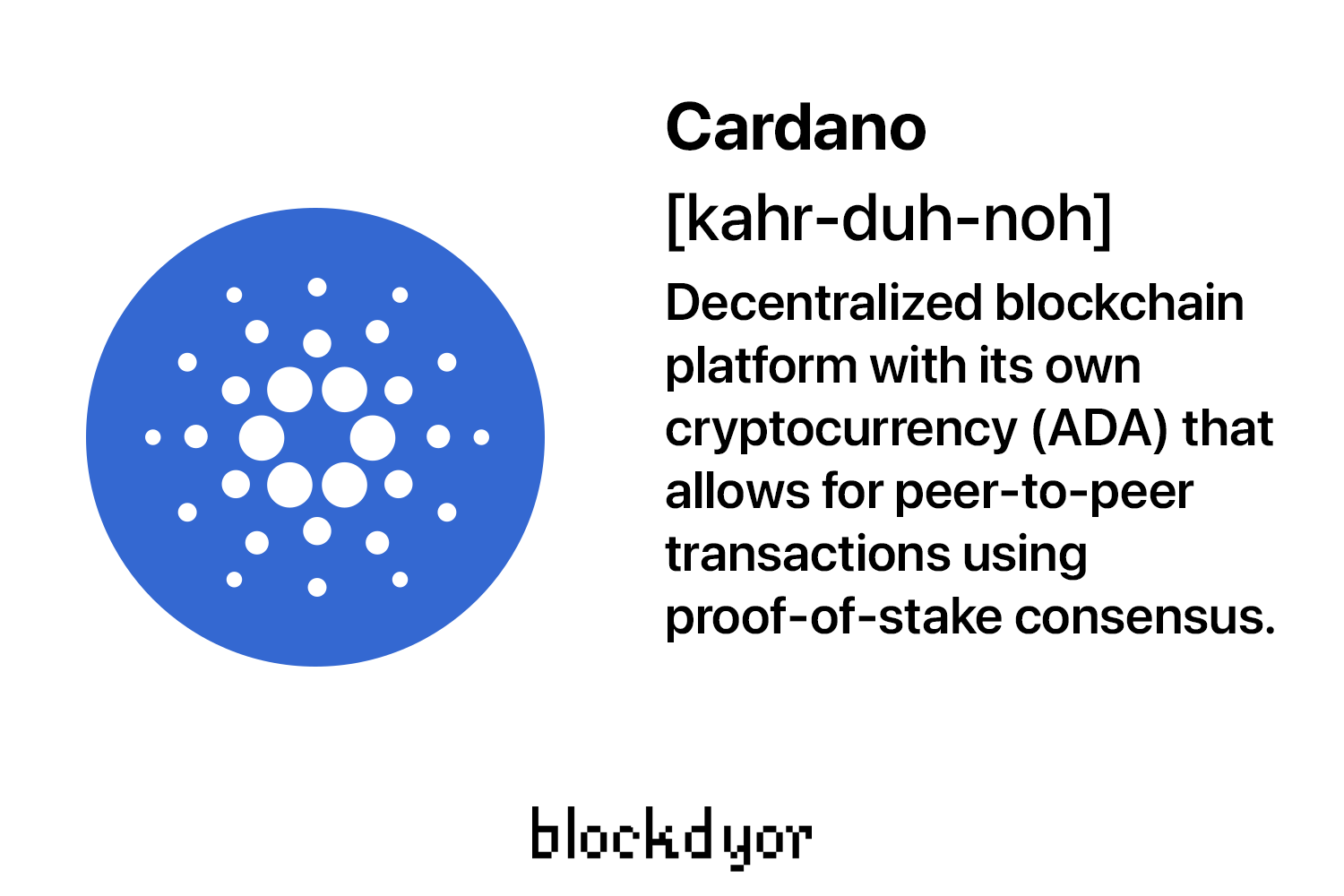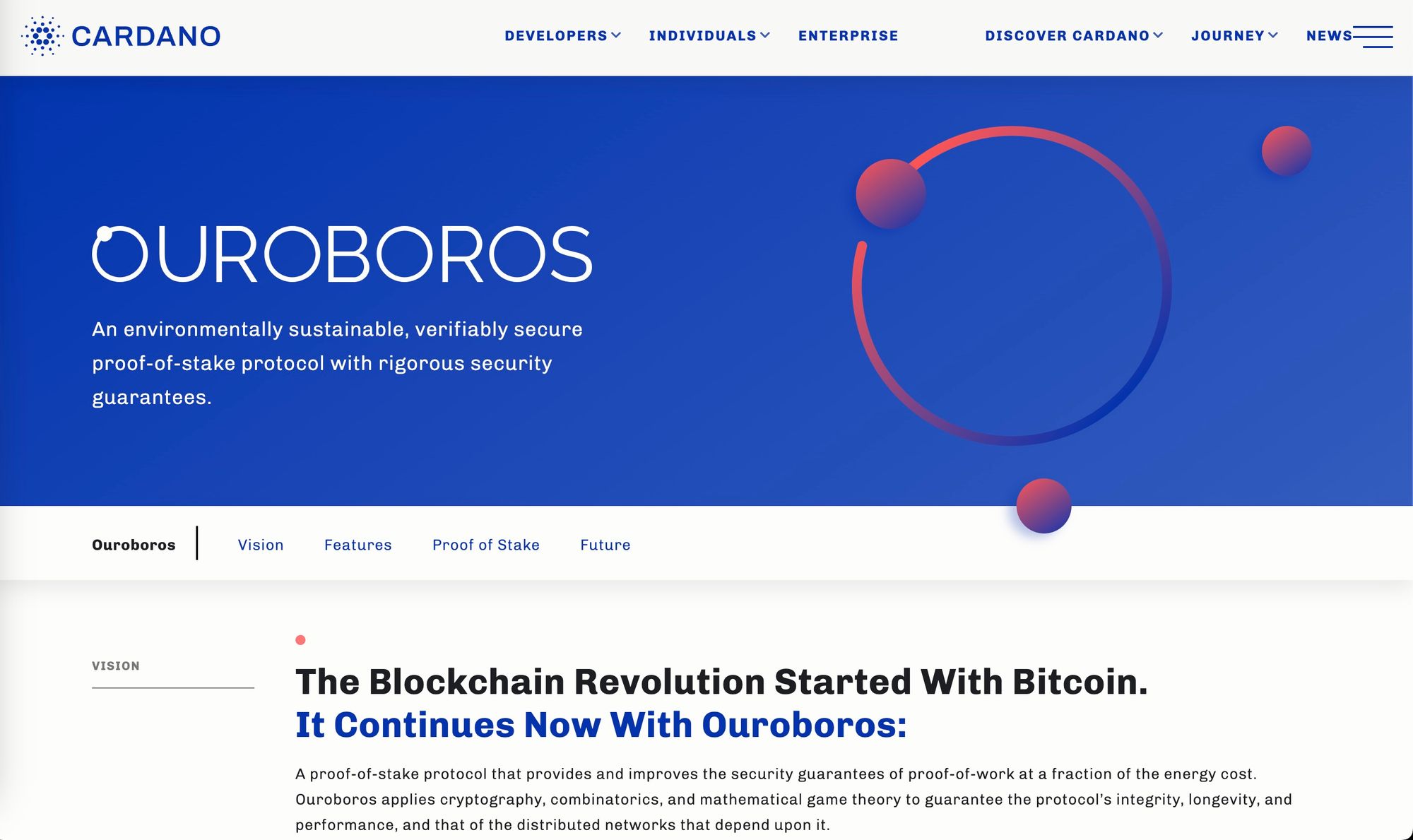Cardano: what it is and how does it work?
Cardano, a blockchain platform, is gaining traction in the crypto industry for its energy-efficient features that could revolutionize the space.
Cardano's unique features, such as its proof-of-stake consensus algorithm and focus on sustainability, set it apart in the crowded crypto market.
Additionally, the growing developer activity on the Cardano blockchain could indicate a bright future for the token.
| PROPERTY | VALUE |
|---|---|
| ฿ Cardano Symbol | ADA |
| 🪙 Initial Coin Offering (ICO) Price | N/A (ADA was not sold through an ICO) |
| 🚉 Platform | Cardano |
| ⚖️ Consensus | Ouroboros Proof-of-Stake |
| 📈 Total Supply | 45 Billion ADA |
| 📉 Circulating Supply | 31 Billion ADA |
| ⛽️ Use Case | ADA is used as a form of payment on the Cardano blockchain and can also be used to vote on governance decisions in the network. |
| 🔥 Token Burn | N/A (ADA does not have a token burn mechanism) |
What is Cardano?

Cardano is a decentralized blockchain network that is based on a proof of stake consensus mechanism, making it a more efficient alternative to proof of work blockchain networks.
Cardano focus on decentralized application development, multi-asset ledger, and verifiable smart contracts, overseen by the Cardano Foundation, IOHK, and EMURGO.
Cardano is an open platform that seeks to provide economic identity to the billions who lack it by providing decentralized applications to manage identity, value and governance
— Charles Hoskinson (@IOHK_Charles) August 2, 2020
The network's cryptocurrency, ADA, is named after the famous computer programmer Augusta Ada King, Countess of Lovelace.
ADA is used in the network's consensus mechanism and is given as a reward to users participating in a stake pool.
Cardano: brief history
Charles Hoskinson, who was a co-founder of Ethereum, created Cardano in 2015 and released it in 2017.

Cardano presents itself as an alternative to Ethereum. These two platforms are used for similar purposes such as smart contracts and aim to build a connected and decentralized system.
But Cardano sees itself as a more evolved version of Ethereum and refers to itself as a "third-generation" platform, whereas Ethereum is considered a "second-generation" platform. Additionally, Cardano's goal is to provide banking services to people who do not have access to traditional banking.
How Cardano works

The Cardano ecosystem is based on the Ouroboros consensus protocol, an innovative solution birthed during the foundation phase of the platform.
As the pioneering proof of stake (PoS) protocol, it endeavors to mitigate the energy expenditure associated with the proof of work (PoW) mining process, by eliminating the need for exorbitant computational resources.
In the realm of digital currencies, two primary methods of consensus are employed to validate transactions. Bitcoin, for instance, employs the Proof of Work mechanism, which necessitates users to solve intricate cryptographic puzzles before the transactions are added to the blockchain.
This process is commonly referred to as cryptocurrency mining. An alternative and more energy-efficient method of consensus is the Proof of Stake.
This mechanism, employed by the Cardano platform, utilizes a network of randomly selected validators to confirm the accuracy of transactions before they are added to the blockchain. This approach eliminates the need for crypto mining and hence, reduces energy consumption.
Cardano Staking: what is it?
In the Cardano network's Proof of Stake system, the act of staking serves as a determinant of a node's capacity to initiate the creation of new blocks on the blockchain.
The stake of a node is equivalent to the quantity of ADA coins it owns over a extended period. A stake is an interest held by a pool participant, secured by the pledge of ADA.
This pledged ADA is held as collateral for ensuring validation behavior and as such, cannot be used or spent by the holder. Users with pledged Ada are recompensed with transaction fees as rewards, which are distributed in proportion to the amount of Ada a user has staked.
Pool staking

The Cardano network employs the Proof of Stake consensus mechanism, in which individuals "stake" coins for the possibility of becoming a validator. Participants in the staking and validation process have the option of assuming one of two roles.
They can either become a stake pool owner or a stake pool operator. These stake pools are trusted server nodes that undertake the responsibility of validating transactions.
A stake pool owner is an individual who has delegated ADA to a pool. One can establish their own private stake pool or allow others to participate in it. Additionally, an individual can become a pool owner by pledging their Ada to an existing pool.
A stake pool operator, on the other hand, is a trusted person charged with maintaining the stake pool, including renting servers, monitoring the node, holding the pool key, and other pool administration tasks.
Pros and Cons of Cardano
| Pros | Cons |
|---|---|
| Transactions using Cardano are fast and not expensive. | Some people say that the way Cardano handles transactions is not as safe as other methods. |
| Many big corporations already use Cardano's payment system. | Some of these companies only use the payment system and not the Ada coin. |
| Ada can be used by regular people and small businesses for safe money transfers. | |
| Ada can be used to transfer money between different countries. |
Smart contracts
In 2021, Cardano introduced support for smart contracts through its Alonzo update, an important step for scalability and a wide range of use cases for users.
This testnet update marked the initial implementation of this feature, enabling users to create smart contracts, non-fungible tokens (NFTs), and manage various digital assets. Subsequent releases and forks will bring even more advanced smart contracts capabilities to the mainnet.
Differences with Bitcoin
| Feature | Bitcoin | Cardano |
|---|---|---|
| Purpose | Peer-to-peer payment system | Ecosystem for token generation and decentralized application development |
| Consensus mechanism | Proof of Work | Proof of Stake |
| Mining process | Competitive mining with rewards in Bitcoin | Staking with rewards in ADA |
| Ecological impact | High due to electricity usage for mining | Low due to use of staking instead of mining |
There are various differences between Bitcoin and Cardano.
First of all, Bitcoin was conceived as a peer-to-peer payment system, while Cardano operates as an ecosystem that empowers other developers to generate tokens, decentralized applications, or devise other utilization scenarios for a scalable blockchain network.
Cardano utilizes a Proof of Stake mechanism for its consensus, and does not provide ADA as a reward in a competitive mining process as Bitcoin does. This reduces the ecological impact by eliminating the need for vast quantities of electricity to power specialized mining computers.
Instead, Cardano users can install compatible wallet software on their computers or devices, stake their Ada, and start earning rewards for participating in the network's operation.
Cardano (ADA) Price and Market Cap
Despite the downtrend in 2022, since its inception Cardano is a cryptocurrency that has grown a lot in value since then. In fact, it has grown more than Bitcoin and Ethereum, which are two of the most popular cryptocurrencies.
If you bought Cardano in 2017, you would have had an interesting return by now. Its value has increased by almost 1000%.
Where to buy Cardano (ADA)?
Cardano, also known as ADA, is a popular cryptocurrency that can be purchased through various reputable exchanges such as Binance, Coinbase or KuCoin, to just name a few.
In addition to purchasing Cardano, these exchanges also offer staking options for their users. This allows users to earn rewards for holding and supporting the network by staking their ADA.
Bottom line

Cardano is a blockchain platform that operates on a proof-of-stake consensus mechanism. Founded in 2015 and launched in 2017, it aims to provide an energy-efficient alternative to proof-of-work blockchain networks like Bitcoin.
With ambitious plans for the future, the developers of Cardano envision it becoming a fully decentralized platform with the addition of voting and treasury management capabilities.
In addition to its cutting-edge technology, Cardano has several factors that could drive its price upward in the future, such as increased developer activity.
This is an opportunity for investors to acquire its tokens at a lower price point and potentially reap significant returns in the long term. However, it is important to underline that as with any investment, there are risks involved and it is not advisable to invest more than you can afford to lose.

